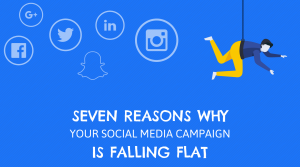Meta is rolling out capabilities that will allow advertisers to use genAI capabilities directly in their Ads Manager workflow.
This week, Meta announced it is beginning the rollout of generative AI capabilities in Ads Manager. These should be globally available by next year.
These capabilities are:
- Background generation. The creation of multiple ad backgrounds allowing advertisers to choose relevant creative for their targeted audiences.
- Image expansion. Automates the adjustment of image assets to aspect ratios suitable for specific channels like Feed or Reels.
- Text variations. The generation of multiple text options based on the advertiser’s original copy to better reach selected audiences.
Meta has been testing the features in an AI Sandbox, making them available to a small and varied set of advertisers. Feedback includes saving “five or more hours a week,” said Meta.
Meta also reiterated the announcement made at the Connect conference that businesses will soon be able to use AI to generate conversational responses to customers on Messenger and WhatsApp.
GenAI magic. “I think the most interesting part is where it magically finds the right text and combination of elements to maximize ad effectiveness,” said Andrew Frank, VP distinguished analyst at Gartner.
Inserting generative AI into the Facebook (and Instagram) ad workflow is likely to appeal to the smaller businesses that constitute the bedrock of Meta’s advertising business. “Most of it is small brand advertisers and a lot of it is highly targeted, localized, topical content. A lot of the effort for those advertisers is the menial reformatting of videos to fit the right aspect ratio and stuff; so I can certainly see how that would be helpful for smaller organizations,” Frank said.
For the enterprise, it may be the case that ad creation takes place in systems before the ad is deployed in a Meta channel. “If you’re an enterprise, then you’re probably relying on your agency to do a lot of the things these tools are doing and the agency has probably has come up with its own ways of streamlining that kind of activity.”
Should agencies be concerned? “On balance, there are more opportunities for agencies than threats,” said Frank. “The more generative AI throws confusion into the mix, the more people will seek guidance from third parties that are more carefully scrutinizing these things.”
The untold story, said Frank, is how Meta’s approach to generative AI is different from main competitors like Amazon and Google. “The LLaMa LLM seems to be gaining some popularity among certain corners of the market. If I look at the broader strategy of Meta, I think that their plan is to try to commoditize as much of the genAI value chain as possible so that it doesn’t shift revenue away from the media channels themselves.”
Going full bore. We received an email expressing similar sentiments from Damian Rollison, director of market insights for SOCi. “Meta seems ready to go full bore with AI for both consumers and businesses, and may still steal a march on Google in this area. Despite Google, Bing, and OpenAI dominating the consumer-facing AI news so far this year, Meta’s offerings are likely to reach a much broader audience much more quickly than any of the three has yet done. Meta’s new AI advertising and business chatbot tools will likely be the first exposure for many brands to large-scale campaigns optimized by AI as well as AI-powered consumer engagement.”
SOCi is a marketing platform for multi-location brands so it has skin in the game when it comes to the kind of highly targeted, highly localized advertising available on Facebook.
Why we care. Everyone is making a genAI move and Meta will not be left out. These announcements seem relatively modest — generate texts and images at scale — but they have the potential to speed up and ease creative workflows for small teams, especially at those smaller businesses that rely heavily on Meta channels to reach their audiences.
The post Meta launches genAI features for ads appeared first on MarTech.
MarTech(5)





